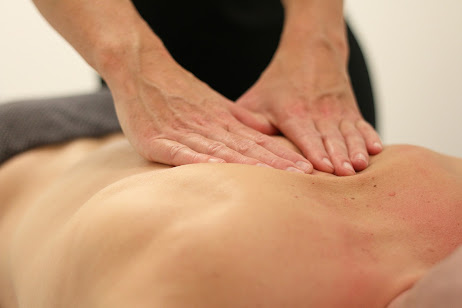Long hours at a desk, hunched over a laptop or desktop screen, can take a serious toll on the body. Office professionals and remote workers alike often deal with persistent neck tension, lower back pain, stiff shoulders, and even headaches—all symptoms of a sedentary work lifestyle. Over time, this daily strain can lead to chronic discomfort, reduced productivity, and even burnout.
One powerful, natural solution that’s gaining popularity among professionals is deep tissue massage therapy. Unlike light relaxation massages, deep tissue massage targets the underlying muscle layers, knots, and connective tissues that carry the burden of our daily posture and stress.
Scientific Support: What Research Says
Several studies have confirmed the effectiveness of deep tissue massage for individuals suffering from work-related musculoskeletal problems.
A 2014 study published in the Scientific World Journal found that deep tissue massage significantly reduced chronic back pain in office workers, leading to improved physical function and reduced use of pain medications.
Another study in The Journal of Occupational Health (2019) revealed that workers who received weekly deep tissue massages reported less neck stiffness, reduced shoulder tension, and greater range of motion compared to those who received no massage or only ergonomic adjustments.
The science is clear: deep tissue massage isn't just a luxury—it's a valuable therapeutic tool for modern workers.
Common Myths About Deep Tissue Massage
Myth 1: Deep tissue massage is too painful to be helpful.
Truth: While the pressure is firmer than traditional massage, a professional therapist adjusts the intensity to suit your comfort. The goal is to relieve tension, not cause pain.
Myth 2: It’s only for athletes or injury recovery.
Truth: Office workers often have the same deep muscle stress as athletes—just from sitting instead of sprinting. Deep tissue massage is highly effective for chronic desk-related tension.
Myth 3: One session is enough.
Truth: Although one session can bring noticeable relief, regular massages provide long-term benefits like improved posture, reduced pain, and enhanced flexibility.
Real Example: From Desk Fatigue to Relief
Meet Raj, a 34-year-old software engineer working remotely from Mississauga. Spending nearly 10 hours daily at his desk, he began experiencing sharp pain between his shoulder blades and frequent headaches. After trying ergonomic chairs, standing desks, and stretching apps with limited relief, he booked a deep tissue massage session.
After just two sessions targeting his upper back, shoulders, and neck, Raj experienced reduced tension and better sleep. By his fourth weekly session, the chronic pain was gone—and so were the constant distractions that affected his productivity.
Benefits of Deep Tissue Massage for Desk Workers
Here’s how deep tissue massage specifically helps professionals who sit for extended hours:
✅ Relieves Muscle Tension and Knots
Releases chronic tension in the upper back, shoulders, and neck areas most affected by computer use.
✅ Improves Posture
Regular sessions can realign tight muscles and fascia, supporting a more upright and comfortable seated posture.
✅ Boosts Circulation
Better blood flow means more oxygen and nutrients to stressed muscles, aiding faster recovery.
✅ Reduces Headaches and Eye Strain
Targeted massage of the neck and scalp relieves tension-induced headaches and improves mental clarity.
✅ Reduces Stress and Mental Fatigue
Deep tissue massage stimulates the parasympathetic nervous system, promoting relaxation and focus, especially useful for high-pressure office environments.
✅ Prevents Long-Term Pain Syndromes
Routine therapy can prevent minor muscle fatigue from escalating into chronic conditions like carpal tunnel syndrome or sciatica.
Book an Appointment Near You: Best Deep Tissue Massage Therapy in Mississauga
If you’re an office professional or remote worker dealing with pain from extended sitting, now’s the time to take action. Choose a certified massage therapist who understands workplace-related muscle stress and offers customized deep tissue therapy.















